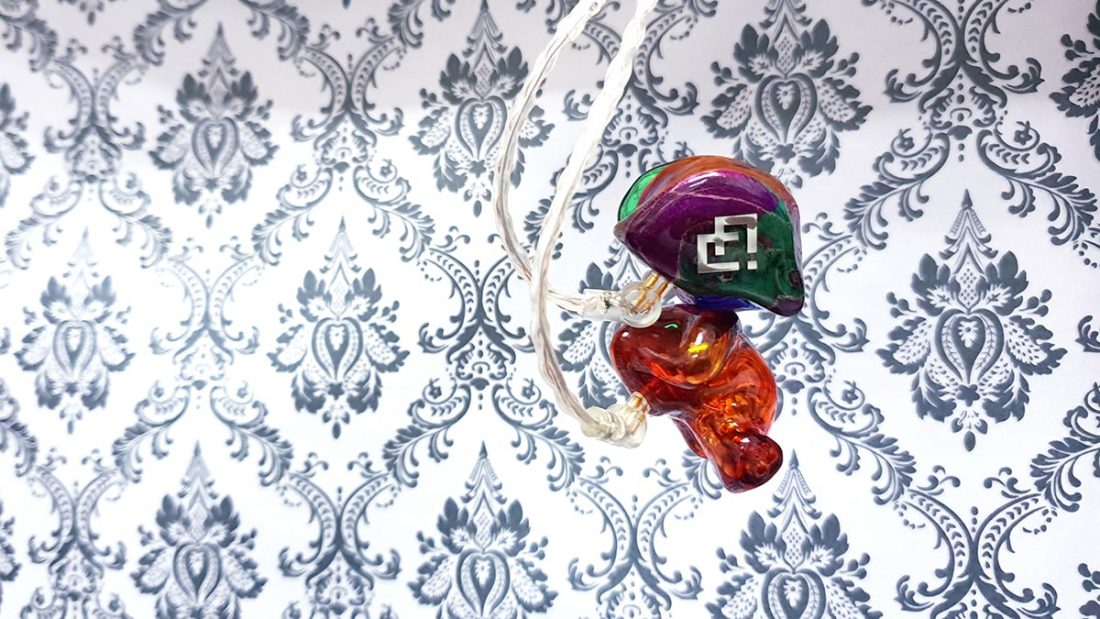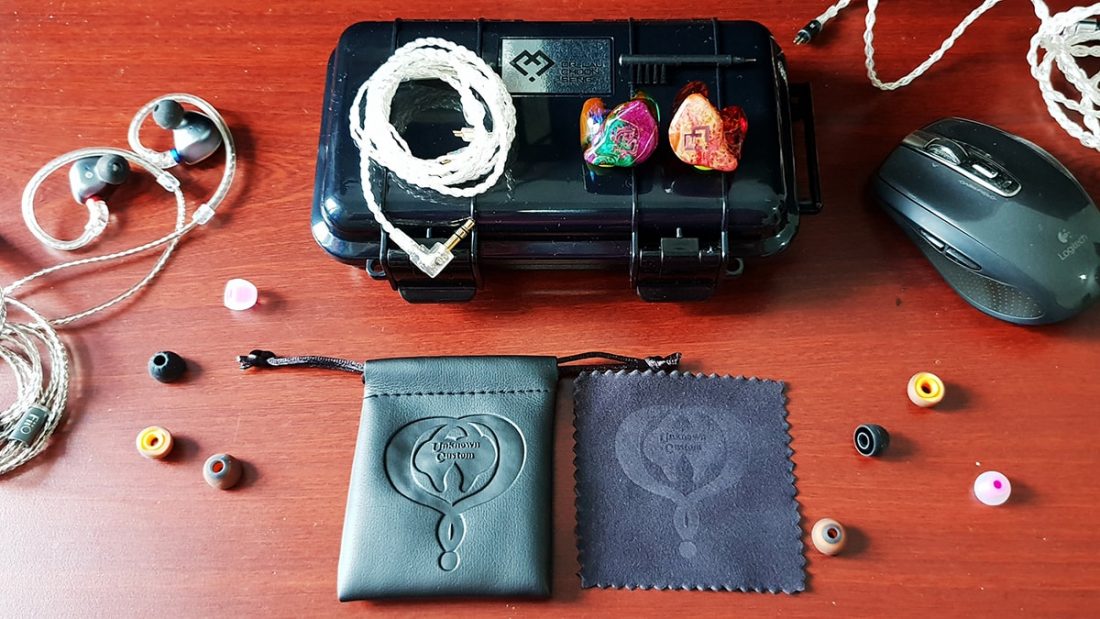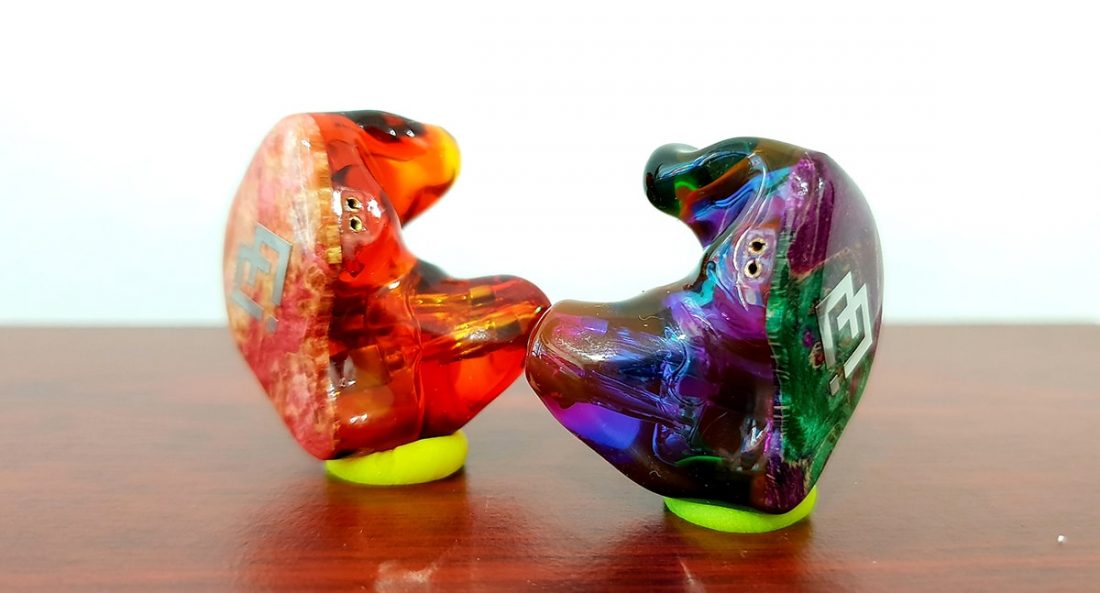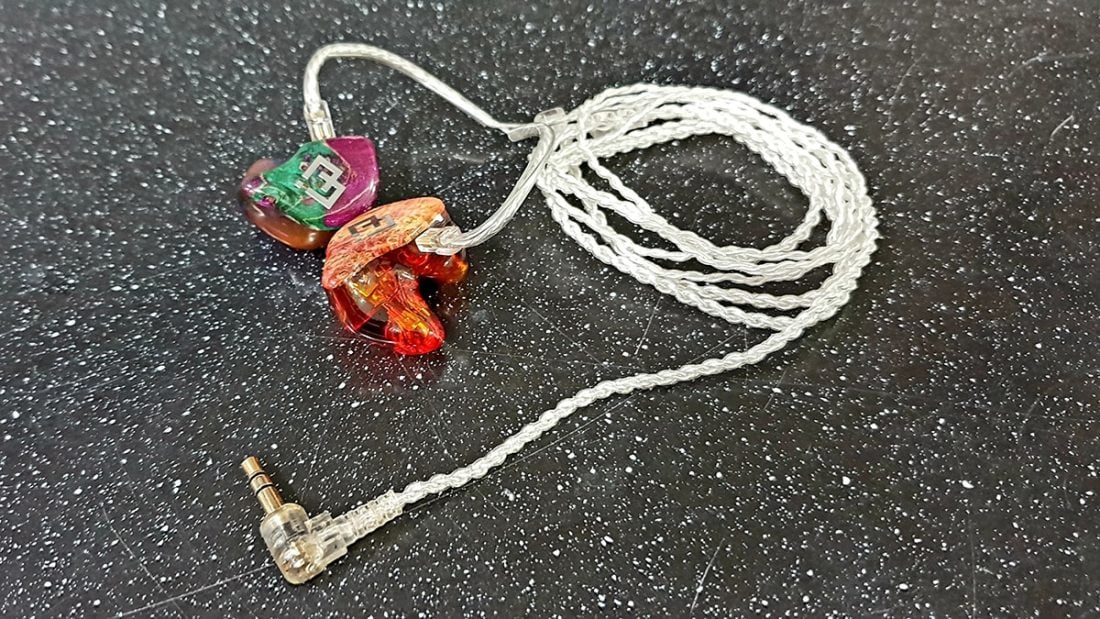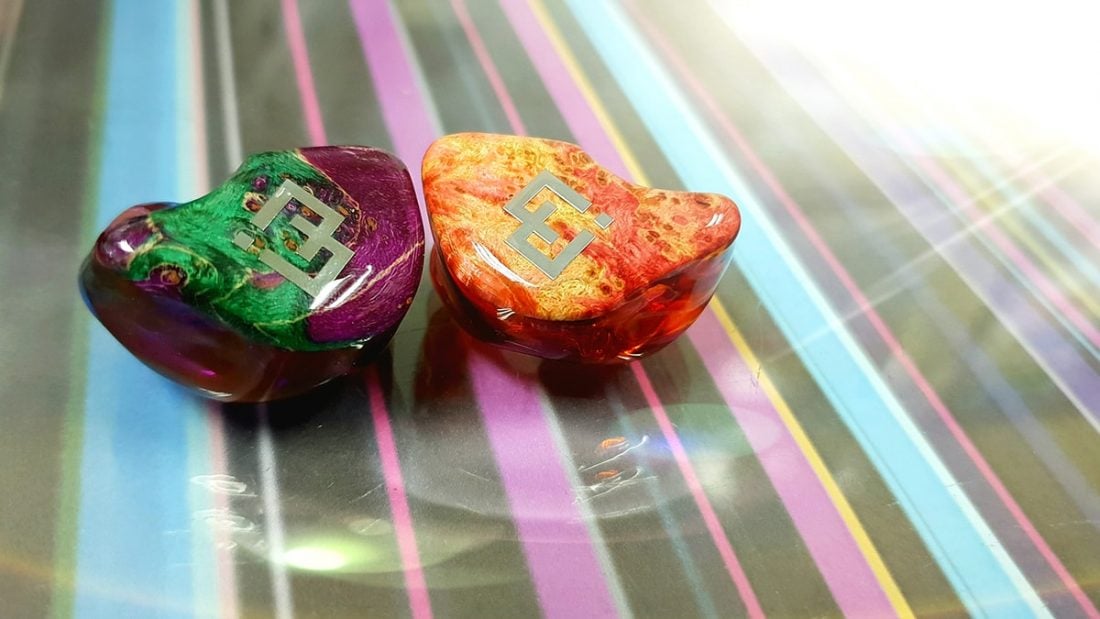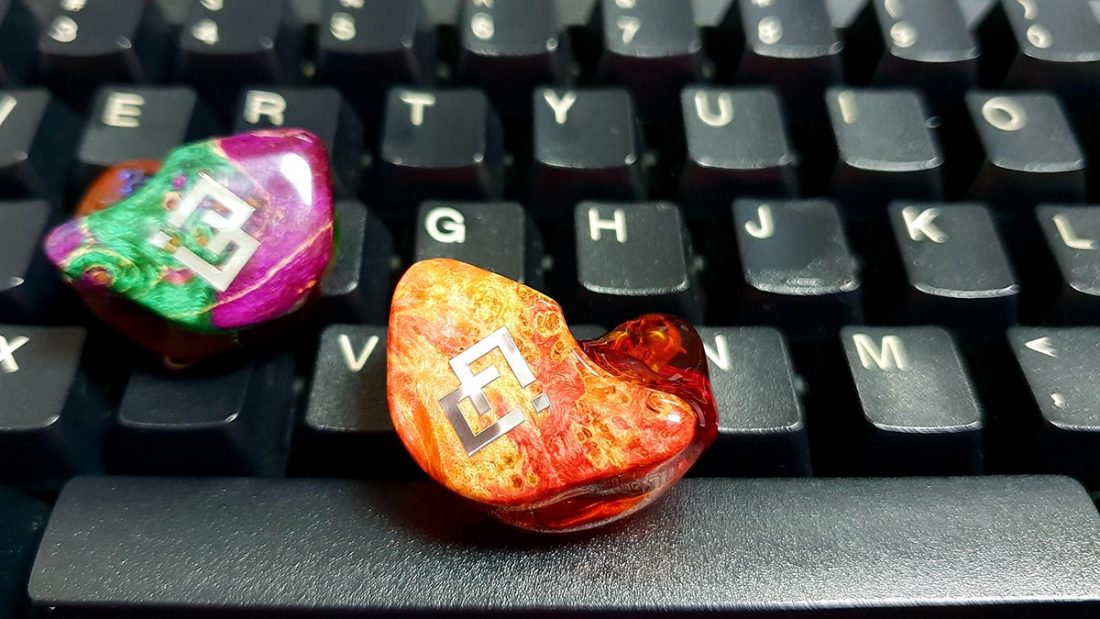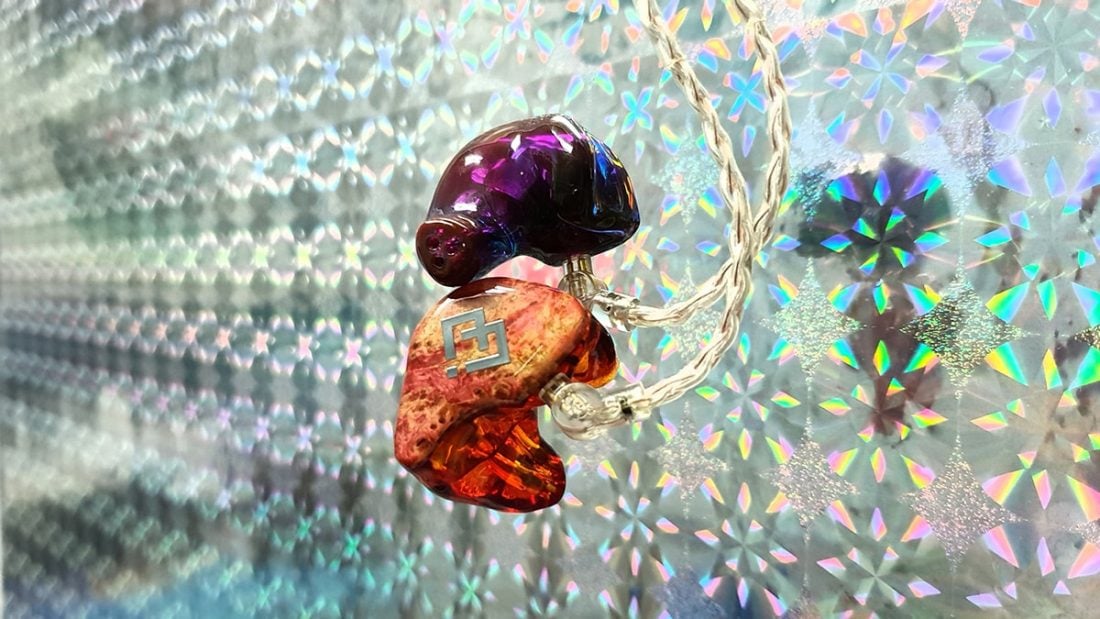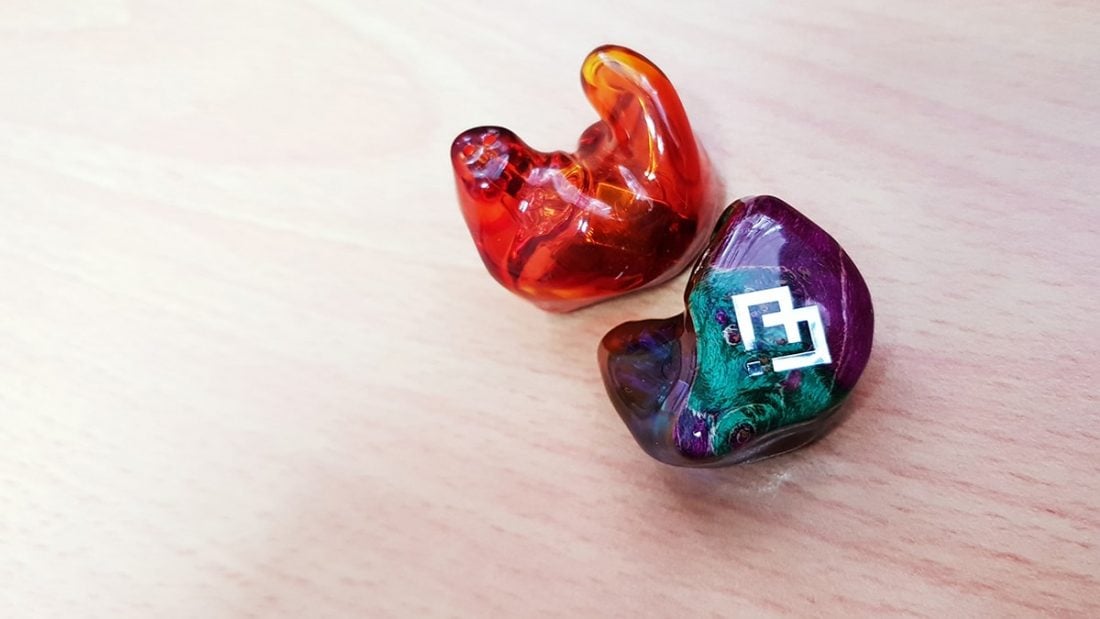Since time immemorial, man has thought of numerous ways to prove their superiority over another, to say “I’m better than you, nyeh nyeh” in the name of one-upmanship. When war proved too costly and people ran out of playmates too soon, they invented sports. When plane tickets became too expensive, regional sports was created. So now we have people happily trumping one another in their respective regions. Today we take the magnifying glass and zoom into my region of Southeast Asia (SEA). The biennial SEA Games are well and alive, where multiple sports are contested but the host nation mostly wins anyway lol. Another SEA Games of sorts is coming up in the CIEM (custom in-ear monitor) arena, where boutique companies are sprouting left and right making CIEMs for every price range. This slideshow requires JavaScript.
Southeastern Promises
SEA’s most established brands come from Singapore, spearheaded by the two-headed dragon, Advanced Acousticwerkes (AAW) and Jomo Audio. They also house up-and-coming Nocturnal Audio. The others are Avara from Indonesia, Nguyen Customs from Vietnam, and FlipEars from the Philippines (my vote for best name). Thailand seems to be a juggernaut in the making, with ARC, Sense Ears, Garan, and Azura Project all bubbling in the country. Madness!
We take away the magnifying glass and bring out the microscope. In my home country Malaysia, three brands duke it out for CIEM supremacy. The high-end, luxury-minded Elysian Acoustic Labs; the lesser-known, midrange-friendly Sound Linear; and our subject today, the brand for the budget-conscious, prudent and really good-looking, Unknown Customs.
Who?
Why unknown? Essentially a one-man company, founder Anderson Bernard Yulik started the brand with the noble (heh) purpose of making affordable CIEMs for the community. A down-to-earth man, he doesn’t do promotional work much but lets the products speak for themselves, so being unknown is sort of an inside joke. Of course, his lineup wouldn’t take off without the Beatles song, I mean with a little help from his friends. Purely by word-of-mouth, his lineup spread amongst local musicians, sound engineers, churches, and eventually, audiophiles like yours truly. And now, with distribution by the Jaben network as well, Unknown might be set to change their name to “Famous” in a few years’ time.
Quad Damage
Today we take a look at their flagship product, the Quad 2.0. Like its namesake suggests, it’s already in its second iteration. Mr. Anderson (like how Mr. Smith calls Neo in the Matrix) doesn’t mess around! The Quad 2.0 is a four balanced armature (BA) CIEM with a one low, one mid, one high and one ultra high configuration. It fashions a three-way crossover network and a three-bore design. At MYR1599 (about USD380) retail, you can experience the best of Unknown. This electrifying price is entry-level for some CIEM brands! The Quad 2.0 is available by contacting Unknown via Facebook. I would like to thank Mr. Anderson sincerely for providing the review sample, and am honoured to be the first to review the Quad 2.0.
Equipment Used:
DAP
iBasso DX-200 with AMP1
IEMs
Unknown Customs Quad 2.0 FiiO FH5 InEarz Zen 4
Albums Listened
ABBA – Gold Bon Jovi – Cross Road Daft Punk – Random Access Memories Denean – The Weaving Ed Sheeran – X Fleetwood Mac – Rumours Lorde – Pure Heroine Madonna – The Immaculate Collection Michael Jackson – Thriller Pink Floyd – Echoes: The Best of Pink Floyd
Packaging and Accessories
A young woman in Austria once sang, “brown paper packages tied up with string, these are a few of my favorite things”. Even people from long ago love the unboxing experience. The Quad 2.0 might not possess the premium unboxing event as other glamorous brands, but the excitement of finally receiving something personalized and just for you is well justified. As with most CIEMs, the Quad comes in a simple and essential package. All you get is an Aegis case and what’s inside: a cleaning cloth, a small pouch and a cleaning tool. They are available in jet black, onyx black or premium black, which is to say, just a single color. But of course, the star of the show is and shall remain, your lovely custom earphones. A standard 3.5mm cable is included too (but in white!).
Design and Build Quality
It is interesting to note that Unknown Customs does not have an official website, contributing further to their unknown status. So, wherefore art the faceplates, shell colours, logos, add-ons etc to choose from? Is there no pictorial guide? Mr. Anderson’s solution, “Google any CIEM design and send to us for reference.” Basically, Unknown is game to replicate any design you like, from the vast infinite reference known as Google. Just forward him the design, add your own tweaks, and Mr. Anderson will accommodate as much as possible. There’s also a large gallery of previous Unknown designs to refer to in Facebook. Just one condition. “No wizardry, no Noble”. Ah well, can’t have it all.
Girlfriend Experience
For the record, I challenged Mr. Anderson with rainbow-coloured shells and stabilised wood faceplates. Held against the light, the rainbow shells give an otherworldly beauty, like visiting Avatar-land. He’s outdone himself with the execution. A friend said they look like infinity stones! The kicker? Turnover time was less than two weeks. Another kicker? All extra design options are free of charge for now. That includes wood faceplates, swirl designs, custom-submitted artwork and anything else you can think of. Mr. Anderson encourages you to use your imagination (or your illusion) and use it well. Great-looking rewards await! Take it from this happy man.
Magnifique!
Build quality is something to be in awe of. Made of hypoallergenic acrylic from Germany, they have the chops to rival bigger, more badass and more expensive CIEMs. The finishing is flawless, with absolutely no bubbles within the shells (I checked with a magnifying glass because that’s how I am lol), and the transition from shell to faceplate is smooth and uninterrupted. We are talking top-tier build quality here.
Cable
Unknown uses generic cables from China that greatly resemble Plastics One cables. I’ve written about them before, and here it is again. This is the base cable provided by most CIEM companies, as stock as they come. With good reason too. It is no-frills and functional, thoroughly gets the job done, unless you get the grand itch of wanting to explore upgrade cables. Don’t scratch, or woe is you then. The generic cable is made of four strands of silver-plated tinsel wires, which have excellent ergonomics and hand-feel. You feel right as rain holding and twisting them in your hands, while they bend and straighten with minimum fuss. The rugged, durable build is a great plus. I have reservations about its sound quality if compared to upgrade cables (covered here), but for what it is, it gets the job done, and is a perfect starter cable.
Fit, Comfort and Isolation
Perfection and satisfaction go together like two peas in a pod, and I ate all the peas. I first shared my concerns about the short nozzle to Mr. Anderson, but he assured me it’s all good, and I’ll get better comfort. So how do they fit? Inserting them into my ears was like putting Lego pieces together, MFEO (made for each other) baby! Unknown joins an elite club of CIEM brands that gave me a perfect fit the first time. Curiously, the only CIEM company that have me grief (and multiple refits) is from a neighbouring country, so we win lol. Being the smallest-profile CIEM in my collection and with the shortest nozzle, it’s also the most comfortable. I could wear them lying on the side, and drift away to musical bliss. Perfection and satisfaction.
What About My Laundry?
Isolation of the outside environment is near-total. Being a full-BA CIEM with no vents, I expected nothing less. This means they isolate so well they might as well be earplugs. Wearing the Quads, I was be totally oblivious to the rain was soaking my laundry outside. Small price to pay for aural pleasure indeed!
Sound Quality
The Quad, with its 4-driver goodness, was burned in for nearly 100 hours before serious listening began. There were no obvious sound changes after burn-in, essentially making Quad a get-up-and-go daily driver IEM, ready to stand and deliver from minute one. The main setup used was iBasso DX200 with AMP1 > stock cable > Quad 2.0.
Overall Sound Signature
We tend to generalise in broad strokes, it’s human nature. That’s why there are so-called tuning tendencies based on geographical location. There’s the upper-mids accentuated Japanese tuning, and a warm, speaker-like British sound. So what constitutes a Malaysian sound? Based on what I’ve heard from Unknown and Elysian Acoustics, the word is “kaw” (pronounced like ‘cow’, but with attitude). “Kaw” is local slang for extra. It means extra thick when we order iced tea, extra effort when we train, and extra doom when summoned by the boss. Both Quad and Elysian’s Terminator (an equally “kaw” name) feature thick, bold and forward signatures. So an ideal day for us is drinking thick tea, enjoying extra spicy nasi lemak with all the toppings, while loudspeakers blare in the foreground (not background, because “kaw”, you see).
“Kaw”abunga Dude!
The Quad has a W-shaped signature (or should I say a “kaw”-shape… ok I’ll stop), featuring elevated bass, thick, luscious and forward mids, and clear, exciting treble. Every aspect of the spectrum is given equal attention and emphasis, while keeping things snappy and fun. Serving as an antithesis to a bland, flat sound, Quad’s signature appeals to a broad, mainstream-minded audience.
Bass
“If you build it, they will come.” I missed the original reference, but this was mentioned in a WWE ad where they built a ring in the middle of a field and everyone just appeared and started fighting… a beautiful, poetic sight. The lesson is, if you build a good foundation in the bass, the rest of the signature will follow, and Quad’s solid bass is a solid base if I’ve ever heard one. The subbass reaches south admirably, delivering wafts of skull-rattling pulses to my ears. They attack with bravado and bombast, powerful and rumbly, asserting authority without breaking a sweat. For the midbass, notes are thick, dynamic, and downright physical! They manhandle you like Arnold and T-1000 busting each other through walls! The boom-boom attack is followed by a meaty, rounded decay that stays for seconds, leftovers and after-dinner drinks.
The Mjolnir
This a BA bass that resembles what a dynamic driver might do. It lacks the naturalness in decay and texture, but covers its bases well. It doesn’t bleed into the mids despite its heavy-handedness, and brings a weighty warmth to the signature. However, being rounded and full, Quad’s bass speed, resolution and layering are not stellar. Sometimes you want a bit more note definition, a bit more detail, a bit more air. In faster tracks the midbass trudges through, and you yearn for a leaner, faster bass. When you swing a hammer in battle you can’t expect the agility and precision of arrows. But for impact, solidity and depth, Quad delivers in spades, hitting measured, heavy strikes that knock the wind out of you.
Mids
If the bass attacks with full intent, the mids show some respite and mercy. Traces of air glide into the mids, giving the signature much-needed breathing space. On the whole, Quad mids are sheathed in a coat of warmth, with organic characteristics its main focus. But at the same time, there is an ever-present element of fun at play, like adding hot sauce to places where it shouldn’t be.
Hot Sauce
Notes are forward, full-bodied, rich, with a natural timbre, but remains snappy and well-spaced. Dynamics and PRaT (pace, rhythm and timing) are on top here, with attacks coming and disappearing swiftly, each note was given equal attention, clearly yet emotionally rendered. But like the bass, the mids seem veiled to those demanding extraction of utter detail. For vocals, they sound less articulate and throaty. You won’t hear every lip smack, indrawn breath and teeth grind in exasperating detail. But I have to say, the piano passages in Ed Sheeran’s Thinking Out Loud, sounded like someone was actually playing in the same room. Gave me a right bumping in the goose.
Virtuoso
You are transported to the middle of the stage, experiencing a delightful, intimate rendition of a virtuoso performance. The mood changes from heart-wrenching to toe-tapping fun in an instant, taking you along for the ride. Despite an overly-forward, in-your-head presentation, the Quad possesses an admirably-tuned midsection.
Treble
The Quad signature is a tale of three personalities. Bass is the hard-drinking hard worker, the brawn of the outfit. Mids are the homecoming queen, exuding beauty and grace, but not afraid of a bit of fun. Treble is the daydream believer who, well, fantasizes a lot about a better life elsewhere. The treble, practically a needle and syringe, injects sharpness and air into the signature, lifting it to loftier heights. Inheriting the liveliness of the mids, the treble has even less inhibition and patience, spouting measured, quick attacks at will, leaving an airy and fluttery decay at its wake. Notes are crispy, clean and quite detailed, devoid of veil. It’s like a refreshing cold drink “kaw” after a long day at work. There’s that word again lol.
Short Legs
Extension though, is very modest. It avoids the sibilance zone by rolling off well before it, probably after 6-7KHz. The lower treble works in tandem with the upper mids to create a fun, exciting upper end. But sometimes it’s absent, like it curiously took sick leave. The “ting ting ting” part at the intro of Bon Jovi’s Livin’ On A Prayer is practically missing. Enjoyment of the song, and rock music in general heavily depends on dynamics and end-to-end extension. Here, it’s like the treble floated off to dreamland at times. What treble the Quad has, it does well. But the early rolloff, while ensuring a smooth finish, depletes some detail and sharpness from the signature.
Soundstage and Imaging
I like to travel, and have visited Hong Kong many times, during different circumstances. As a starving university student, I stayed in a hostel with bunk beds and shared restrooms. Then when I started working, I could afford a budget hotel. The last visit, with girlfriend in hand, I coughed up the dough for a splashy four-star hotel. The works. But in all the above, one fact remained constant. The restroom remained curiously small. The shower unit and toilet throne are literally next to each other, and you can do both at the same time. So in one of earth’s greatest economies, the economy of space persists no matter how much I spent on a room. Maybe I’ll do Shangri-La next just to be sure.
Restrooms?
While nowhere near Hong Kong-hotel-restroom small, Quad’s stage dimensions are intimate indeed. It is cube-shaped, with width, depth and height extending just beyond the head, but no further. Most of the music occurs within my head. For the most part, imaging and layering is not bad, aided by a good amount of depth and height. Separation is clean particularly for the mids and treble. However, the plodding bass threatens to upset the balance with its tremendous weight. Its heavy-handed notes spell bad news for complicated tracks, where speed is sorely needed. A bit more black space would be welcome for a cleaner, tidier stage, and to give more space for the bass to roam.
Comparisons
FiiO FH5
I seem to whip out the FH5 for comparisons every chance I get, simply because it’s a killer with a highly technical and musical sound. It’s my benchmark for a top performer in the less than USD500 bracket, and handily beats many IEMs higher in price. If other people can impose meat-free living, I can impose the FH5 upon you guys too. Get it or die! Quad and FH5 follow different tuning philosophies, but the same analogy applies. Listening to Quad feels like being submerged in water, while switching to FH5 is like emerging from it. FH5 has a clear, balanced signature, which allows you to focus on the music as the FH5 “disappears”, while Quad has a bassier, heavier approach which draws attention to itself.
Ballet and Boxing
Throughout the signature, it’s a tale of beauty vs brawn. FiiO’s flagship sounds leaner, faster, more articulate and better-differentiated from top to bottom compared to Quad. Quad is punchier, more rounded and physical, at times muffled and congested, but brings more enjoyment to the party. The FH5’s technical approach tend to be its folly as well. For modern music I yearn for more midbass and lower mids, more richness and emotion in vocals. These are however, the Quad’s main strengths. It offers an amazingly rich and deep lower end that can satisfy bassheads. Mids are also more organic and euphonic than the FH5 will ever be. A smooth operator.
The Air and the Ground
Higher up though, Quad’s treble is no match for FH5’s extension and reach. It plays safe, too safe, while FH5 ventures higher and gets rewarded with rich detail and sparkle. For soundstage, FH5 is wider with more accurate imaging, while Quad relies on good depth and height for separation, but gets bogged down by its heavier, meatier notes. Overall, they attract different audiences. FH5 is more attuned to the audiophile, technically proficient while retaining some fun. Quad is quite the reverse, opting to plunge head-first into its fun tuning while scraping by with technicalities. I tend to prefer FH5 but Quad is a brilliant guilty pleasure, like a Big Mac, on days when I want some hard-hitting pleasure.
InEarz Audio Zen 4
American CIEM company InEarz launched their new universal line just in time for this comparison. We’re comparing the Quad with the 4BA Zen 4 in a pound-for-pound, or rather driver-for-driver shootout. Like its namesake, the Zen 4 hopes to help you attain audio nirvana via a relaxed, Zen-like state, so you can already guess what the signature is like. But I’ll tell you anyway. The Zen 4 is laidback, dark, and not in a hurry to go anywhere. It’s what I call the perfect chillout IEM, with weighty bass, sweet mids and too-smooth-for-school, rolled-off treble. It’s saving grace? ADEL technology and the soundstage magic it brings. The Zen 4 has noticeably bigger stage dimensions in all directions than the Quad, and better layering.
Four-Play
The Quad though, won’t take this lying down. Quad is ever-ready to let its hair down and party, compared to the poetic peacefulness of the Zen, which is kind of the feeling you want right before bedtime. For bass, both have similar extension, bellowing bass air from the nether regions to the listener. Quad’s subbass is more fleshed out and bold, but Zens have better note definition. Quad has a more energetic and thumping midbass, while Zens are more polite. Both are good in separating the bass from the mids, with no bleed whatsoever.
Smashing Time
In the mids, Quad is more upfront and livelier, in both instruments or vocals. Notes have a bite and crunch (swear to you I’m not hungry) that lends excitement, with snappy attack and decay. Zen mids, while smoother, sound distant, veiled and tend to smear into one another due to its overt smoothness. Needless to say, it’s inferior to Quad in timbre and PRaT. Zen’s biggest weakness, the muted treble, takes a hiding here. Even though Quad is barely an authority in treble quantity, Zen looks like it missed the bus altogether, sounding weak and subdued, like the guy in glasses you don’t want to hit (or do you?). Quad takes treble, but only just, with speed, texture and sparkle. Both are rolled-off too early, but at least Quad shows some signs of life. Overall, even though I’m a self-confessed stagehead and would give anything a spin if they promised a big stage, I’d take Quad any day of the week. Zen’s staging and imaging are superb, but the sober, sombre tuning is too calm for my tastes.
Final Words
As I traverse deeper into this infectious hobby, I’ve learned that the environment develops and adapts to changes quickly. Kinda like the Predator. A few years ago, I was resolved to importing all gear, convinced that local retail shops do not meet my exaggerated thirst for top-of-the-line (TOTL) head-fi. There’s a party to be had and it’s always elsewhere. Imagine my surprise and subsequent delight when just within two years not one, not two, but three CIEM companies would mushroom in my own backyard. It was time for this well-weathered, self-professed IEM veteran to see what the locals can do, and secretly hope that they can match up to other Southeast Asian CIEM makers as well, because well, SEA Games!
A Few Small Repairs
After a wild night of (what else?) listening and comparing, morning comes and the dust begins to settle. Setting aside national pride and perhaps, some wishful thinking, Unknown Customs’ Quad 2.0 is a good monitor, with a few adjustments needed before becoming great. It’s right up there as one of the best-looking and best-built CIEMs in my collection. There is no compromise in quality and it’s truly world class. Quad has a highly accessible sound signature which will win audiences. Its dynamic, impactful bass coupled with some very tuneful mids are sure to enthrall and excite. It has the ability to either get people on their feet or swoon with heartfelt sentiment at a drop of a hat. It’s a small earphone willing to dream big. As a young company only in its third release, they have plenty to prove and improve. I approve. My words are as influential as influenza, but after seeing and hearing what Unknown is capable of, I hope in the near future they will be unknown no more. I wish my countryman nothing but the best.

